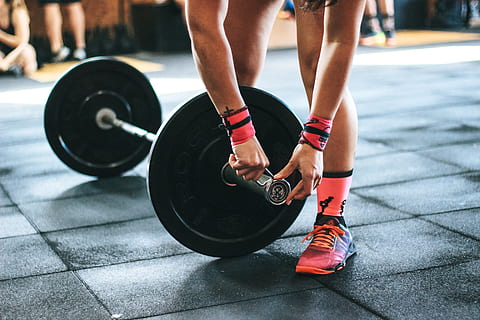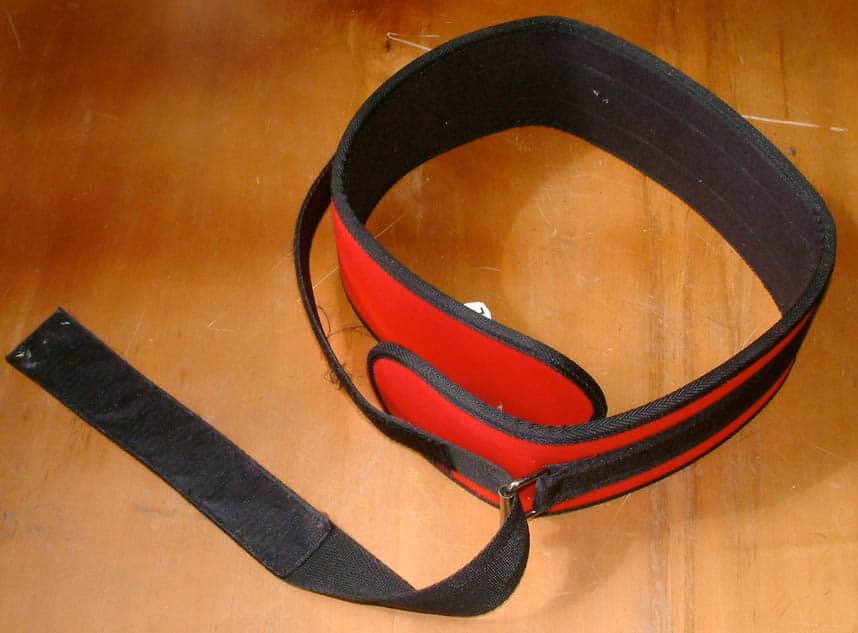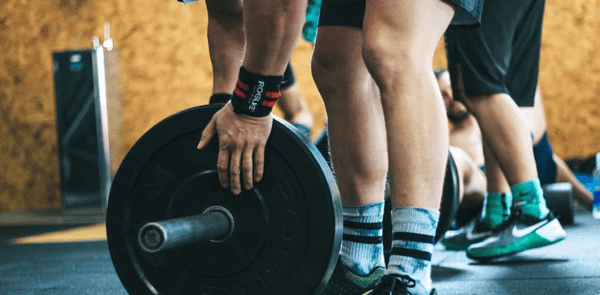Weightlifting straps are simple yet effective tools for improving grip strength. They can be a real game-changer, allowing you to push your limits in the gym. But how do you use them the right way?
In this guide, we will walk you through their proper usage. Here, we’ll cover the different types and how to choose the right one for your needs to help you get started.
Ready to strap up and lift with confidence?
Weightlifting Straps
 (Image Credit: Wallpaper Flare)
(Image Credit: Wallpaper Flare)
Weightlifting straps are sturdy, adjustable bands designed to improve grip during weightlifting exercises. They consist of two key components: a long, durable strap and a loop or hook mechanism. The strap is usually made of heavy-duty cotton, nylon, or leather.
When it comes to the types of weightlifting straps, there are a few popular options to consider. The most common variety is the traditional loop strap. This type involves wrapping the strap around the wrists and looping it around the bar or weight.
Another is the figure-eight strap, which forms a figure-eight shape, hence the name. The design provides extra support, particularly when wrapped around the bar and wrists. Additionally, there are also hook-style straps that feature a metal or plastic hook. Such features secure the strap to the bar, offering a different gripping mechanism.
The choice of material can vary among weightlifting straps. Cotton straps are soft, comfortable, and affordable, suitable for lighter lifts. Nylon straps are more durable and ideal for heavy lifting. Leather straps, although less common, provide excellent durability and grip. Ultimately, the durability of weightlifting straps depends on the quality and maintenance.
Choosing the Right Weightlifting Straps
 (Image Credit: Wikimedia Commons)
(Image Credit: Wikimedia Commons)
Several factors come into play to ensure they meet your individual needs:
- Consider your lifting style. If you do deadlifts, for instance, traditional loop or figure-eight straps are ideal. If you prefer Olympic lifts or exercises where speed is crucial, hook-style straps may be best.
- Comfort is another important consideration. Look for straps with padding or cushioning around the wrist area. Additionally, straps with adjustable lengths allow for a customisable fit.
- Your personal goals also play a role in choosing the right straps. Say your focus is on building grip strength. Then you may opt for thinner and less supportive straps to challenge your grip. Conversely, if you aim to lift heavier weights, go for thicker and more supportive straps.
Proper Application
Begin by placing the loop or hook of the strap around your wrist, ensuring it’s snug but not overly tight. Next, wrap the strap around your wrist a few times. Make sure it overlaps the previous layer to create a secure foundation.
As for adjusting strap tension, it’s crucial to find the right balance. The straps should be tight enough to provide a solid grip on the bar. Adjust the tension by pulling the loose end of the strap while keeping your wrist in a neutral position.
Note: Online resources and video tutorials can provide visual demonstrations for assistance.
Exercises Suitable for Weightlifting Straps
 (Image Credit: Wallpaper Flare)
(Image Credit: Wallpaper Flare)
Weightlifting straps can provide benefits for exercises that require a strong grip like:
- Deadlifts
- Shrugs
- Rows
When performing deadlifts, the straps can help you maintain a secure grip on the bar. They allow you to lift heavier weights and focus on engaging your posterior chain. Similarly, during shrugs, straps assist in keeping your grip from fatiguing prematurely. They enable you to target your upper traps effectively. For rows, straps ensure a secure grip on the bar or dumbbell. This helps enhance back engagement and prevents grip fatigue.
Safety Considerations and Precautions
Regardless of using straps, maintaining correct lifting mechanics is paramount. Ensure you engage the appropriate muscles. Maintain a neutral spine and execute movements with control and precision.
Relying too heavily on weightlifting straps can pose risks. Over reliance on straps may neglect grip strength development. This can lead to imbalances and limit functional strength gains. Furthermore, avoid excessive strap tension or incorrect application. Otherwise, this can cause unnecessary strain on the wrists or limit blood flow.
Round-up
Weightlifting straps can be invaluable tools for enhancing grip strength. But their proper use should always be accompanied by proper form and technique. Also, remember that grip strength development and strength should go hand in hand.
So, what are you waiting for? Strap up, lift smart, and achieve new heights of strength and performance!


